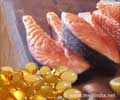- Ackee Blighia sapida: Jamaica's top fruit - (http://www.academia.edu/4136212/Ackee_Blighia_sapida_Jamaicas_top_fruit)
- Fat profile of Jamaican ackees, oleic acid content and possible health implications - (http://caribbean.scielo.org/scielo.php?pid=S0043-31442014000100003&script=sci_arttext&tlng=en)
- Ackee Growing in the Florida Home Landscape - (http://edis.ifas.ufl.edu/hs378)
What is Ackee?
Blighia sapida, or most commonly known as Ackee, is a fruit that majorly comes from Jamaica. The Jamaican national fruit is yellow colored fruit with black seeds. It has a creamy buttery texture with a neutral taste like that of nuts. Only ripened ackee could be eaten as unripe fruit might result in toxicity.
The aril is the eatable part of ackee and could only be eaten if seed and red membrane are completely removed. Ackee is a very nutritious and healthy fruit, rich in vitamin A, zinc and protein.

Nutritional Facts of Ackee
Content of a 100g serving of Ackee:
| Nutrient | Quantity |
| Fat | 15.2g |
| Protein | 2.9g |
| Water | 76.7g |
| Carbohydrates | 0.8g |
| Fiber | 2.7g |
| Calcium | 35mg |
| Iron | 0.7mg |
| Folates | 41mg |
| Thiamine (Vitamin B1) | 0.03mg |
| Niacin | 1.10mg |
| Riboflavin(B2) | 0.07mg |
| Ascorbic Acid(Vitamin C) | 30mg |
Health Benefits of Ackee
- Membrane Development: Linoleic acid (a polyunsaturated omega-6 fatty acid) is an essential fatty acid found in ackee which is not made in our body and it is necessary for membrane development in the eye and brain.
- Control Cholesterol Levels: Ackee is a good source of beneficial fats like linoleic, palmitic and stearic acids and provides an excellent source of fatty acids in the traditional Jamaican diet. It has been believed that high amount of fats in ackee increase cholesterol levels but research has proven that these fats are good for health. These unsaturated fatty acids help control cholesterol levels.
- Dietary Fiber Maintain Digestive Health: Ackee contains a high amount of dietary fiber that is beneficial for maintaining digestive health. Fiber helps in proper bowel movement, thus preventing many stomach-related conditions of constipation and obesity. Also, it reduces the risk of colon diseases and type 2 diabetes.
- Epilepsy and other Nervous Problems: Niacin is a crucial vitamin required for the better functioning nervous system. Ackee contains an adequate amount of niacin that helps in curing nervous problems like epilepsy and maintain overall nervous health.
- Healthy Skin: Presence of many vitamins and minerals in ackee keeps skin healthy and repairs cartilage. Vitamin C prevents acne and pimples too.
- Other Uses: Folate helps in preventing birth defects while minerals like iron and calcium maintain proper hemoglobin levels in blood and are also good for bone and teeth health. Also, the presence of all the necessary nutrients in ackee helps in curing conditions like fever, colds and edema.
- Traditional Uses: This Jamaican fruit has been sought for many folk-medicinal benefits. Repeated doses of aqueous seed extract have been used to eliminate parasites. Also, ackee pod poultice has been used to treat skin infections, ringworm and liver spots. The ripe arils of ackee along with sugar and cinnamon have been used to treat fever and dysentery. The ackee tree bark mixed with certain spices can relieve pain. The new leaves are crushed and applied to the forehead to ease a severe headache; when mixed with salt, it is applied on ulcers. Ackee leaf tea can also be used to alleviate cold.


Tips for Usage:
- There is a traditional saying to use ackee only when it has ‘smiled’. This means that only ripe ackee must be consumed as it opens once ripe. Unripe ackee is poisonous and contains toxins such as hypoglycin A and hypoglycin B.
- Seeds and the red membrane must always be removed before cooking as seeds are always poisonous.
- Before using it in any preparation, ackee must be boiled very well to ward off the toxins in water and the water then must be carefully disposed of.
- Do not boil any other vegetable or food with ackee.
- Ripening of ackee should be confirmed before consumption.
- Ackee could be used with saltfish, corned pork, callaloo, tomato etc.
Ackee Recipes
Ackee and Vegetables
Preparation time: 5-7 min
Cooking time: 10 min
Ingredients:
- 4 Mushrooms, Chopped
- 5 Baby Tomatoes, Chopped
- 3 Spring Onions, Chopped
- 1 Black Pepper, Sprinkle
- 1 Tin Ackee, drained
- Light Soya Sauce, Optional
Method
- Sweat the onions lightly.Add the tomatoes and cook for roughly 3 min.
- Add Ackee to the pan and mix well.
- Now add spring onions and cook.
- Slowly cook for roughly another 3 min stirring occasionally. Add black pepper and a splash of light soya sauce
- Serve with bread or pasta or anything you like!
Ackee and Saltfish
Preparation time: 15 min
Cooking time: 30-45 min
Ingredients:
- 1 can of ackee, drained
- 1/2 lb boneless salt cod
- 2 onions, sliced
- 1/4 teaspoon dried thyme
- 1/4 scotch bonnet pepper skin finely chopped
- 1 small tomato, chopped
- 3/4 teaspoon tomato paste
- 3 tablespoons oil
- 1/2 sweet pepper chopped
- Pinch of black pepper
Method
- Soak the salt cod in a pot of water overnight to remove most of the salt. If the cod is still very salty then boil it in water for 20 minutes.
- Drain cod and cut it into small pieces.
- Heat oil in a frying pan. Add the sliced onions, thyme, scotch bonnet pepper, chopped tomato, tomato paste and green peppers.
- Cook it for few minutes.
- Add the cod. Simmer for 5 minutes then add drained ackee. Do not stir as stirring can cause the ackees to break.
- Cook for some more minutes and garnish by sprinkling black pepper.
- It can be served with roast breadfruit, dumplings, or cooked plantains, yams and Jamaican sweet potatoes.








